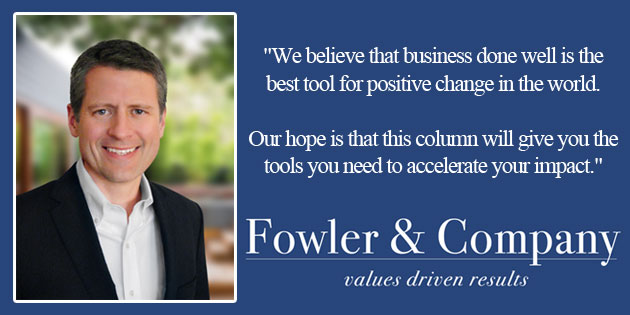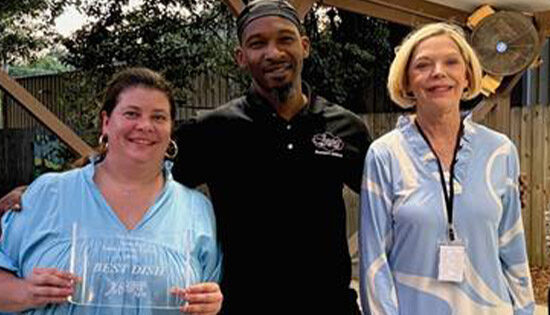By Curt Fowler | Fowler and Company
Yes – it is a very long title, but it is a connection that drives results. In our previous post, we talked about how great brands drive higher profits. In this post, we are going to show you how to start from the beginning to establish your corporate values, which will create your culture, which becomes your brand and drives your profits! Don’t worry, it is not as complicated as it sounds.
Let’s start with values. We all have them, though most of us do a terrible job of writing them down and following them. Take a moment to think of people you know and admire. What is it that draws you to them? For me, I love being around people that stand for something. Finding people that stand for something, that are passionate about something is increasingly rare. Finding people that are passionately against something is very easy and very different. Do you want to attract people to you and your business? Be for something, not against everything.
Now think of companies you admire. Some of my favorites are Chick-fil-a, Zappos, and Southwest Airlines. Why? Because they stand for something. All three of these corporations stand for outstanding customer service along with some other values dear to my heart like fun!
Core values are guiding principles that never change. They are enduring, passionate and distinctive core beliefs that drive your behavior and the behavior of your entire team. Now, let’s work on establishing the core values of your organization.
Here are 2 questions to ask yourself and your leadership team to find the core values of your organization. You can do this as a group, individually or as part of a weekend strategy session. If you already have adopted corporate core values, use this exercise to determine if those values are still valid.
- What are the core values that you hold yourself accountable to?
- What are the core values or attributes of your ideal employee?
Have each leader reduce their list to 5 or 6 core values. Each core value must be more than a word. Use phrases or stories to show what they really mean.
Avoid generic values jargon words like “integrity.” If integrity or one of the other often used phrases shows up on your list, have your team dive deeper and come up with new words and stories to describe what you really mean. Integrity means way too many different things to different people. Don’t let there be any ambiguity about what your core values mean.
Have the group distill all the values into five to ten core values that really capture the essence of who your organization is today. This is not the time to list “aspirational” values. Aspirational values can be included in the vision for your organization. This is about what your organization believes and is today.
Next, ask each leader to take the condensed list of core values and (by themselves) run each value through the following list of questions:
- Would you build a new organization around this value?
- Does your leadership live this value today?
- Would you hold true to this value if it cost you money, even your business?
- Would you continue to apply this value to your life if you could afford to do anything?
- Would you quit/sell the company before giving up this value?
Bring the group back together and have the leaders list each value that received a “yes” for all five questions. Condense the down to three to five values and test those values by asking for feedback from your entire team. The key questions to ask your team are:
- Are we living this value today?
- Are there values that we missed that better define who we are?
Continue the feedback process until the great majority of your organization agrees with the list of values. Shoot for three to five core values in total. Zappos pulls off having ten, but it is difficult for most organizations to remember and live out that many. If you can’t get three values through the tests, keep working on it until you find three to five that truly represent who your organization is today.
Then, CONGRATULATIONS! You have determined the core values of your team.
Next week we’ll dive into how your organization can authentically live out your values so that your values will create your culture, which will build your brand and drive your profits!
If you’re ready to get started now, head over to our Resource Page and check out our free tools to help you start building a better business today.
Have a business growth topic you’d like me to cover? Send suggestions to cfowler [at] valuesdrivenresults.com or use our contact form by clicking here.
Curt Fowler is an organizational growth expert and President of Fowler & Company, a business advisory firm dedicated to helping leaders create and achieve a compelling vision for their organization. He has an MBA in Strategy and Entrepreneurship from the Kellogg School, is a CPA, and a pretty good guy as defined by his wife and four children.












